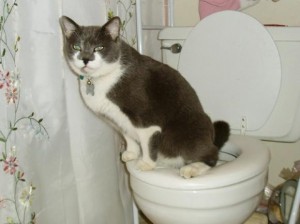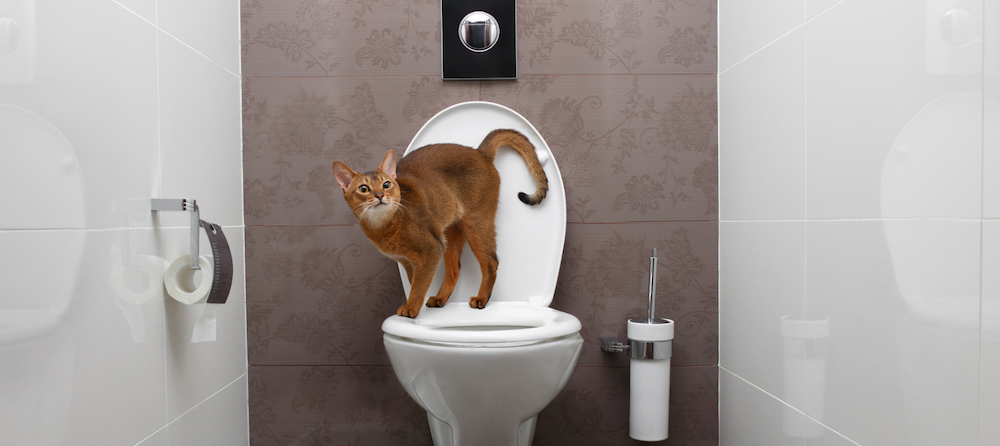Avoid Plumbing Problems: Don't Flush Cat Poop Down Your Toilet - Expert Advice
Avoid Plumbing Problems: Don't Flush Cat Poop Down Your Toilet - Expert Advice
Blog Article
We've stumbled upon this post relating to Don’t flush cat feces down the toilet directly below on the internet and believe it made good sense to discuss it with you here.

Introduction
As feline owners, it's important to bear in mind just how we dispose of our feline buddies' waste. While it might appear hassle-free to purge pet cat poop down the commode, this technique can have harmful consequences for both the atmosphere and human health and wellness.
Environmental Impact
Flushing feline poop introduces hazardous microorganisms and parasites into the water system, presenting a substantial threat to water ecological communities. These impurities can adversely affect aquatic life and compromise water high quality.
Health and wellness Risks
In addition to environmental issues, flushing cat waste can additionally posture wellness dangers to human beings. Feline feces may have Toxoplasma gondii, a bloodsucker that can cause toxoplasmosis-- a possibly severe illness, specifically for expectant women and people with weakened body immune systems.
Alternatives to Flushing
Fortunately, there are safer and a lot more accountable means to deal with cat poop. Think about the complying with choices:
1. Scoop and Dispose in Trash
One of the most usual approach of taking care of feline poop is to scoop it into a biodegradable bag and throw it in the garbage. Be sure to make use of a dedicated trash inside story and get rid of the waste immediately.
2. Use Biodegradable Litter
Choose naturally degradable cat litter made from products such as corn or wheat. These litters are eco-friendly and can be safely dealt with in the garbage.
3. Hide in the Yard
If you have a yard, take into consideration burying cat waste in a marked area away from veggie yards and water sources. Be sure to dig deep enough to stop contamination of groundwater.
4. Set Up a Pet Waste Disposal System
Purchase a pet garbage disposal system especially developed for feline waste. These systems use enzymes to break down the waste, lowering odor and ecological effect.
Final thought
Accountable family pet possession prolongs beyond supplying food and sanctuary-- it likewise involves proper waste management. By avoiding flushing feline poop down the bathroom and opting for alternative disposal techniques, we can lessen our environmental footprint and protect human health.
Why Can’t I Flush Cat Poop?
It Spreads a Parasite
Cats are frequently infected with a parasite called toxoplasma gondii. The parasite causes an infection called toxoplasmosis. It is usually harmless to cats. The parasite only uses cat poop as a host for its eggs. Otherwise, the cat’s immune system usually keeps the infection at low enough levels to maintain its own health. But it does not stop the develop of eggs. These eggs are tiny and surprisingly tough. They may survive for a year before they begin to grow. But that’s the problem.
Our wastewater system is not designed to deal with toxoplasmosis eggs. Instead, most eggs will flush from your toilet into sewers and wastewater management plants. After the sewage is treated for many other harmful things in it, it is typically released into local rivers, lakes, or oceans. Here, the toxoplasmosis eggs can find new hosts, including starfish, crabs, otters, and many other wildlife. For many, this is a significant risk to their health. Toxoplasmosis can also end up infecting water sources that are important for agriculture, which means our deer, pigs, and sheep can get infected too.
Is There Risk to Humans?
There can be a risk to human life from flushing cat poop down the toilet. If you do so, the parasites from your cat’s poop can end up in shellfish, game animals, or livestock. If this meat is then served raw or undercooked, the people who eat it can get sick.
In fact, according to the CDC, 40 million people in the United States are infected with toxoplasma gondii. They get it from exposure to infected seafood, or from some kind of cat poop contamination, like drinking from a stream that is contaminated or touching anything that has come into contact with cat poop. That includes just cleaning a cat litter box.
Most people who get infected with these parasites will not develop any symptoms. However, for pregnant women or for those with compromised immune systems, the parasite can cause severe health problems.
How to Handle Cat Poop
The best way to handle cat poop is actually to clean the box more often. The eggs that the parasite sheds will not become active until one to five days after the cat poops. That means that if you clean daily, you’re much less likely to come into direct contact with infectious eggs.
That said, always dispose of cat poop in the garbage and not down the toilet. Wash your hands before and after you clean the litter box, and bring the bag of poop right outside to your garbage bins.
https://trenchlesssolutionsusa.com/why-cant-i-flush-cat-poop/

We hope you enjoyed reading our article on Don’t flush cat feces down the toilet. Thanks so much for taking the time to browse our blog. Kindly take the time to share this blog posting if you enjoyed reading it. Kudos for your time. Visit again soon.
About Report this page